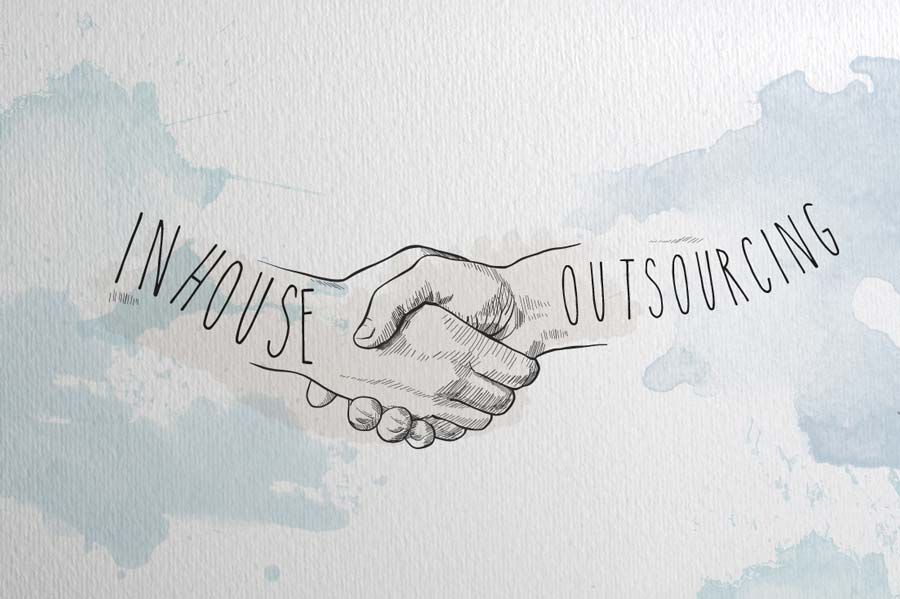Celebrating the first anniversary of my latest career manifestation got me thinking … What actually constitutes a career / my career? Do I even have one? Could it be that modern times call for a re-evaluation of the traditional vertical career path? The answer, my friend, is walking like a crab…

Copyright courtesy of Steidl-Verlag (https://steidl.de/Buecher/Im-Krebsgang-1429354153.html)
A couple of years ago, a very esteemed colleague of mine advised me to focus, to create a clear profile, and to then push to the top full steam ahead – if I wanted to make a career in the corporate world. And since that colleague had indeed made it to the top of the classical hierarchy food chain, I reckoned I’d better give that advice some serious thinking. So I did.
But alas, what I discovered in fact pointed into the opposite direction. I realized that for far too long I had been chasing the ghosts of the vertical career myth – with the bait of a team lead or senior management dangling in front of me. Work hard, put up with a lot of shit, and then you might too be boss one day. Well, I had worked hard, I had put up with enough shit, but still wasn’t boss.
But does that mean I wasn’t successful?
I had been zig-zagging from journalism and writing to literature and linguistics, from university teaching to scientific research, from PR to multimedia dot-com-boom agency work, and then off to the (at first) paralyzing tentacles of Corporate Mordor (with one pay check to rule them all), when I learned the “Career Crabwalk”. Meaning: I exchanged vertical for horizontal, prestige for content, climbing for side-stepping, thereby exploring unexpected horizons over and over again. A Crabwalker takes many steps to the side, but nevertheless gets ahead, seeing things along the way that other people who are skyrocketing or even relentlessly crawling to the top never get to see.
What did the trick for me was taking on exciting “special projects” that apparently nobody else was up for, or, if I choose to be more vain, nobody seemed better suited to lead than me, myself, and I.
The inciting moment for this change in perspective was being entrusted with the creation and lead of Siemens’ first real storytelling project called “/answers” in 2011 (a seminal step for me – and the company). After that, it was as if the gates to an alternative career world had opened: new opportunities continued to pop up around the bend, just at moments when I was starting to get a little bored with the routine of a smoothly running project. These opportunities were definitely always unanticipated, eye-opening, and game-changing for me. Some examples:
- Co-creating Germany’s first Corporate Newsroom at Siemens Headquarters. Suddenly I was an architect, an IT expert, and an Editor-in-Chief.
- Advising international brands on the creative and organizational aspects of corporate storytelling (as a side-job free-lancer). Suddenly, I was a coach, a teacher, and a keynote speaker.
- Leading a global task force aiming at substantiating business potential for Siemens along China’s New Silk Road (also known as the “Belt and Road Initiative”). Suddenly, I was a global business development project lead and policy advisor, speaking to governments, customers and associations around the world.
- Stepping in Tenzing Norgay’s footsteps and becoming Sherpa of the Chairman of the Asia-Pacific Committee of German Business (APA), Joe Kaeser. Suddenly, I was the man behind the curtains, making sure that the Chairman’s high-wire act through the high- and lowlands of German and Asian geo-economics and politics went as smooth as possible.
- And now, since one year, head of another special ops thing called “People Experience”, fairly new in the HR scene, definitely new at Siemens. And suddenly, I’m fighting for the right of all people working for Siemens to have a great experience while doing so.
The moral of my little story (apart from showing off, naturally, and proving that working for the same company for almost 20 years must by far not be dull or repetitive)? Maybe to consider the following Key Performance Indicators for a modern and individually relevant career approach – one that challenges Yazoo and is much more apt to helping you develop personally (in a not status-related way), stay relevant and, even more important, content with what you do to make a living:
You’re happy doing what you do. True, every job sucks every now and again, and you can’t be happy all the time. But if you get up on most days with a good feeling when thinking about the day’s work ahead of you, then you might actually be in the right place – at least for the moment. However, i If your gut feeling tells you something else: see KPI 5.
You’re not bored. One of the career buzzwords of today is “Growth Mindset”. Without it, apparently, you won’t be relevant anymore when tomorrow comes. Be that as it may, one lesson I learned a long time ago, without knowing what kind of mindset I had: as soon as I’m bored, I have to move on. So I did, shaping my career grasping opportunities that promised to save me from looming boredom. Being bored is not good. But everybody gets bored by different things, and some people never get bored doing the same thing day in and day out – which is absolutely fine. So if you’re not bored where you are right now, why move? See KPI 1 for the rationale behind this.
You are able to learn new stuff every day. Whether staying in the same job all your life is actually a career might be up for discussion (and probably not even possible anymore). But as long as you feel your horizon is constantly broadening, and your daily job is one major drivers of this constant enlightenment, then you’re on the right path to building your own personal career every day.
You have a life. Absolutely, we need to give a 100% for our jobs every day, and sometimes even more. But when you live for work and don’t work for the life you have when you’re not working, you’re doing something wrong. After all: the adrenalin kick that comes with the self-delusion of having to or actually being able to save the corporate world every day won’t last, and most probably you will sink into oblivion at the company you work for sooner than you think.
Your eyes (and mind) are wide open. If that is the case, so is your future. This is not a plea against loyalty to boss, team, or company. En contraire, it’s a plea for giving your best every day – but also for honest introspection every now and again. If you feel you can’t give your best anymore, no matter what your job is, hold your breath for a second and try to figure out why that is so. Are you maybe just having a hard time in your private life distracting you a little? Then this will probably go away one way or the other, and is definitely not related to your job, so don’t overreact. Do you feel you’re no longer on top of things happening in your area of responsibility? Then you might need to get some training, coaching or mentoring, and off you go again. But if you feel what you are doing is no longer your thing, then open your eyes, take a look around you – and start doing the crabwalk. You’ll be surprised at what comes your way on the career path you thought you didn’t have.
I for one am far from bored and pretty happy where I am right now. But I’m also pretty sure that this is not the end of my career road. The crab in me is always alert, able to quickly change direction in response to whatever comes my way or opens up on the horizon.
After all:
“What’s money? A man is a success, if he gets up in the morning and goes to bed at night and in between does what he wants to do.”
(Bob Dylan)





